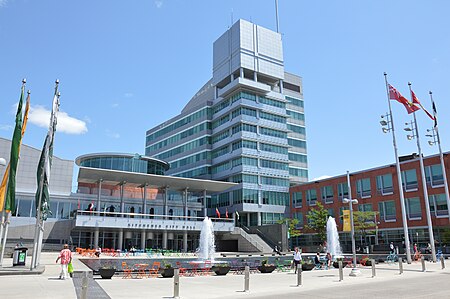Regional Municipality of Waterloo

The Regional Municipality of Waterloo (Waterloo Region or Region of Waterloo) is a metropolitan area of Southern Ontario, Canada. It contains the cities of Cambridge, Kitchener and Waterloo (KWC or Tri-Cities), and the townships of North Dumfries, Wellesley, Wilmot and Woolwich. Kitchener, the largest city, is the seat of government. The region is 1,369 square kilometres (529 sq mi) in area. The population was 587,165 at the 2021 Canada census. In 2016, the Cambridge, Kitchener, Waterloo area was rated Canada's third-best area to find full-time employment.The region was formerly called Waterloo County, created in 1853 and dissolved in 1973. The county consisted of five townships: Woolwich, Wellesley, Wilmot, Waterloo, and North Dumfries.
Excerpt from the Wikipedia article Regional Municipality of Waterloo (License: CC BY-SA 3.0, Authors, Images).Regional Municipality of Waterloo
Avenida Paseo Cabriales, Parroquia San José
Geographical coordinates (GPS) Address Nearby Places Show on map
Geographical coordinates (GPS)
| Latitude | Longitude |
|---|---|
| N 43.466666666667 ° | E -80.5 ° |
Address
Avenida Paseo Cabriales
Avenida Paseo Cabriales
2001 Parroquia San José, El Trigal
Estado Carabobo, Venezuela
Open on Google Maps






